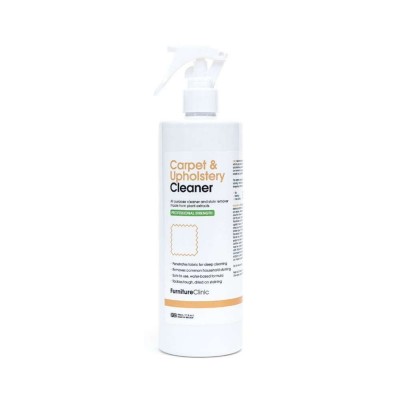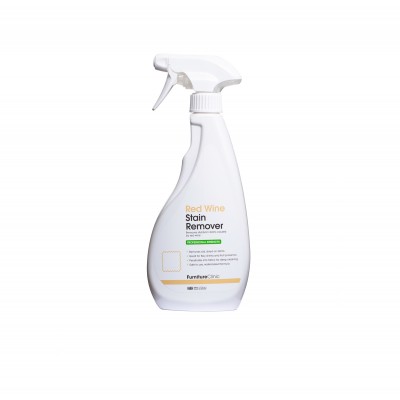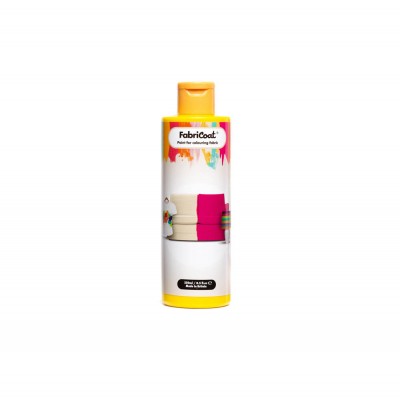WATCH – HOW TO USE CARPET AND UPHOLSTERY CLEANER
Make sure the fabric is thoroughly clean before application. Dirt, grease and grime will stop the Fabricolour from being absorbed easily and so cleaning the fabric is an important step.
Spray the Carpet and Upholstery Cleaner onto the fabric so it becomes damp and agitate with a Tampico Brush. Apply more product to the dirtier parts of the fabric. Leave the product to dwell for 15 minutes and then rub the fabric with a Terry Towel to remove the dirt.
Areas where your hand and head rest are generally dirtier and more greasy so these areas should be cleaned several times.
WATCH – HOW TO REMOVER RED WINE STAIN
STAIN REMOVAL
Stubborn stains can be removed using the specialist Red Wine Stain Remover, stains such as; red wine, tea, coffee, pen and many more.
RINSING
Fabric can only absorb so much of anything, so if you apply Fabricolour to a material that already has something within it, then there is less chance of getting as much Fabricolour in as possible.
Anything in the fabric, even cleaning residues will stop the Fabricolour from soaking in as good as it can. So, once the fabric has been cleaned, rinse it with warm water to remove any excess cleaning residues from within the fabric.
MIXING FABRICOLOUR
For best results mix Fabricolour with 50% Penetrating Solution. This will help penetration into the fibres creating a nicer end result. Penetrating Solution is a solvent and can damage some fabrics such as flock fabric, so always test the effects in a hidden area. Mix a small amount of Fabricolour and Penetrating Solution together and apply to a hidden area, leave it to dry and then rub the area with a cloth. If the fabric still looks and feels the same you're ok to proceed. If the fabric is damaged then you should thin the Fabricolour down with 50% water instead of Penetrating Solution. Use the plastic cup provided to make the mix.
The mix of Fabricolour and Penetrating Solution or Water will now be referred to as the mix.
RESTORING THE COLOUR
Allow the fabric time to dry. Drying times will vary depending upon the type of fabric and how wet it became. However, it isn't crucially important that the fabric is completely dry, applying Fabricolour whilst the fabric is still damp can actually help draw the Fabricolour into the fibres further. Do not apply it whilst the fabric is too wet.
Test your mix in a hidden area to make sure you're happy with the colour and that the mix doesn't have any adverse effects on the fabric.
SPONGE APPLICATION
If the fabric has a flat, tight weave you can skip this step and jump to the spraying section. Otherwise, for fabrics with a pile you should apply a sponge coat. Or, if the fabric has lots of folds or areas that would be hard to only reach by spray only then you should apply a sponge coat.
Wrap a piece of Terry Towel around a sponge and dip it into the mix. Wipe any excess back into the cup so the cloth isn't soaked and then rub it into the fabric. Try to apply an even amount over the whole area, doing one panel at a time. You want to try and avoid over applying the mix onto certain areas so the fabric dries to the same colour without a lot of lines or streaks.
It's quite difficult to apply a sponge coat without being left with areas that are darker in some places than others, or with lines.Try your best, but don't worry as any such areas will be coloured over with the spray application.
Some fabrics will take the colour well and others won't, generally fabrics with a tight weave will colour quickly, but fabrics with a pile will require 2 or 3 sponge applications to start to see a difference.
Watch – How to Change the Colour of Fabric
SPRAY APPLICATION
If you applied a sponge coat, the spray coat should be applied whilst the fabric is still damp.
- Mask off any areas that you don't want to colour.
- Cover any flooring or walls with a dust sheet to capture any overspray.
- Work in a well-ventilated area to reduce overspray settlement.
Set up the spray equipment and begin to spray the fabric at a distance of about 20cm from left to right. Make one pass over the whole item you are restoring and then wipe fabric down gently with a Terry Towel to remove any excess mix. Repeat the same procedure going up and down immediately after, or whilst the fabric is still damp.
If the colour doesn't look even repeat above spraying process until it does. For fabrics with a pile you'll need to spray in many different directions to try and get each side of the pile.
PROTECTION
Make sure you are 100% happy with the colour before applying the Carpet and Upholstery Protector. Once applied, you won't be able to apply more Fabricolour.
The Carpet and Upholstery Protector can be applied whilst the fabric is still damp from being coloured, or it can be applied once the fabric has dried.
Spray (using the atomiser or trigger head supplied with the Carpet and Upholstery Protector) the Carpet and Upholstery Protector onto the fabric so the surface becomes damp. Spray a second coat on straight after the first, but in the opposite direction. i.e. left to right and then up to down.
USING YOUR NEW FABRIC
The fabric can now be dried with a hair drier or it can be left to dry naturally. It will take several hours to dry and be useable. However, the product will continue to cure over the following 72 hours so if possible it's best to leave it this long.
MAINTENANCE
Re-apply the Carpet and Upholstery Protector once every 6 months for best results and vacuum the surface to remove dirt. Always pre-test any cleaning solutions on a hidden area before use.


















